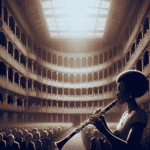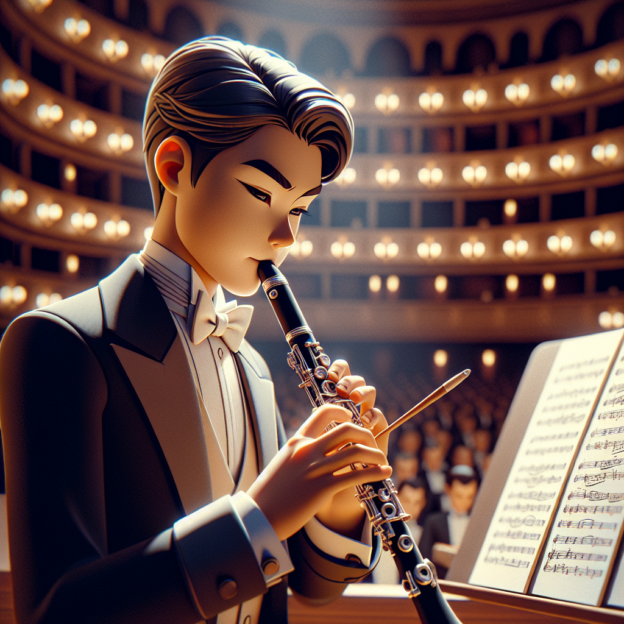Clarinet concertos have held a cherished place within the hearts of players for centuries—offering challenges, depth, and a stage for dazzling solo expression. Whether you've been playing for years or just dipping your toes into the genre, there's a breadth of pieces to explore that have become staples for performers everywhere. Let's explore clarinet players' favorite clarinet concertos and what makes them unforgettable.
Mozart's Clarinet Concerto in A Major, K. 622
Where else to start but with one of the most iconic works ever written for the clarinet: Mozart's Clarinet Concerto in A Major? This masterpiece was composed towards the end of Mozart's life, and it's a work that every clarinetist dreams of performing. Its movements flow seamlessly between emotional, lyrical lines and playful, intricate passages that test a clarinetist's technical prowess. Listening to the soaring Adagio, you might feel as though the clarinet is human, singing its deepest thoughts. No wonder it's stood the test of time.
For decades, this concerto has brought players closer to the elegance of classical music composition while pushing their control and expressive capacity. Professionals and students often take inspiration from this timeless piece, marveling at how it captures both the player's technical skill and heartfelt emotion. When performing this work, it feels as though no other instrument but the clarinet could express such a delicate balance of joy and melancholy.
| Composer | Concerto | Key Features |
|---|---|---|
| Mozart | Clarinet Concerto in A Major, K. 622 | Emotional depth, technical challenges, lyrical Adagio |
| Weber | Clarinet Concertos No. 1 and No. 2 | Romantic style, virtuosic passages, dramatic themes |
| Copland | Clarinet Concerto | Jazz influences, contrasting movements, unique cadenza |
Weber's Clarinet Concertos (No. 1 and No. 2)
Carl Maria von Weber wrote not one but two sensational concertos for the clarinet, both of which seem to thrill audiences and clarinetists alike to no end. These concertos bring a robust romanticism that stands in stark contrast to the restrained elegance of Mozart's. Both pieces are packed with dynamic leaps, lightning-fast runs, and lyrical melodies that demand every ounce of a player's skill and expressive dedication. If your fingers love a good workout, these pieces truly deliver.
Weber's pieces invite clarinetists to not only demonstrate their virtuosity but also to connect emotionally with the audience. The lush, sweeping themes in his concertos often conjure images of sweeping landscapes or operatic drama. There's no holding back when handling Weber's works, as their flamboyant flair brings out the performer inside every musician. Clarinetists with a Martin Freres clarinet often mention these works among their favorites to showcase what their instrument can achieve.
Copland's Clarinet Concerto
A slightly more modern gem is Aaron Copland's Clarinet Concerto. This piece adds intriguing layers of jazz-inspired rhythms and harmonies to the repertoire. Commissioned by the jazz great Benny Goodman in the late 1940s, it's a work that bridges traditional clarinet techniques with some playful and unexpected stylistic turns.
What stands out here is the stark contrast between the tranquil, flowing first movement and the lively, toe-tapping second movement—connected by an evocative clarinet cadenza that lets players truly shine. Performing Copland's work provides clarinetists with a unique opportunity to experiment with tone and color while embracing its lighthearted playfulness. There are subtle nods to Americana in the motifs, adding an earthy charm to an otherwise sophisticated framework.
Stamitz Clarinet Concerto No. 3
Johann Stamitz might not be as widely known as Mozart or Weber, but his contributions to classical repertoire are nothing short of delightful. His Clarinet Concerto No. 3 brings vibrant energy to the table. This concerto's playful spirit and impressive technical elements make it an exciting experience for performers. Its understanding of the clarinet's ability to charm audiences is evident, packed with cheer and cheerfulness in every note.
Stamitz's works remind clarinetists of how whimsical and light the instrument can sound, making this piece less intimidating for intermediate players but still rewarding for the seasoned professionals.
Crusell's Clarinet Concertos
Bernhard Henrik Crusell, another lesser-known composer, contributed an incredible trio of concertos beloved by those in the clarinet world. These pieces, a fine blend of elegance and technicality, remain favorites among students and professionals. The harmony and melodic warmth offer musicians a chance to focus on phrasing and dynamics while basking in their sophisticated beauty.
Crusell's works show how clarinet playing is an artistic blend of storytelling and technical finesse. Though his concertos may not receive as much commercial performance as Weber or Mozart, they are hidden treasures often discussed as benchmarks for developing classical players.
New Discoveries for Modern Clarinetists
Contemporary composers have also enriched the clarinet concerto repertoire. Works by composers such as Jean Françaix, Gerald Finzi, and Carl Nielsen provide exciting challenges with modern twists and complexities. Their pieces bring fresh perspectives yet manage to showcase the delicate versatility of clarinets.
Oh, and if you're looking for that sweet tone through every note, playing these concertos on a Martin Freres clarinet adds depth and nuance that elevates your performance further. It's like setting words to music—only better!
Why Do Concertos Matter So Much to Clarinetists?
What makes these clarinet concertos—old and new—so important to a clarinetist's journey? For one, they offer a balance between pushing technical limits and letting pure artistic expression shine through. They also highlight what makes each instrument truly unique, tapping into its diverse capabilities—from articulatory speed to deeply resonant tones.
A concerto doesn't just test your technical skill; it tells a story. Performing a concerto isn't about standing rigid; it's about delivering an unforgettable, moving experience for listeners. Each piece draws out different sides of a performer, from romantic sentiments to jazzy improvisations or dramatic storytelling. Clarinetists walk away from these performances with not only applause but also invaluable growth as musicians.
So whether you're gearing up with a Martin Freres clarinet for Weber's iconic second concerto or exploring the distinct colors of Copland, these concertos will remain touchstones for generations of clarinet players. What are you waiting for? Grab your clarinet and dig into one of these masterpieces. It's your time to shine!







